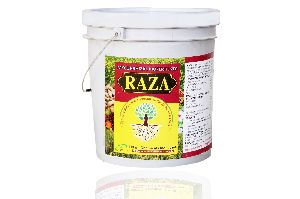
Vesicular Arbuscular Mycorrhiza
100 Per Kilogram
100Kg Kilogram (MOQ)
Mycorrhizae are obligate and saprophytic in nature requires a living host for their survival. Commonly divided into three major groups Ectomycorrhiza, Endomycorrhiza and Ectendomycorrhiza. Ectomycorrhiza and Endomycorrhiza are important in agriculture, fungi penetrate into the plant cells, producing balloon like vesicles. The structure of the arbuscules increase the contact surface between the hyphal and the cell cytoplasm to facilitate the transfer of nutrients between them and VAM fungi produce the glycoprotein glomalin which may be one of the major stores of carbon in the soil, management of VAM fungi enhances phosphate uptake and mobilize immobile micronutrients like Fe, Mn, Zn, Cu, Bo, Mo. Besides these to impart resistance to plant against drought, soil borne fungal pathogens and nematodes.
...more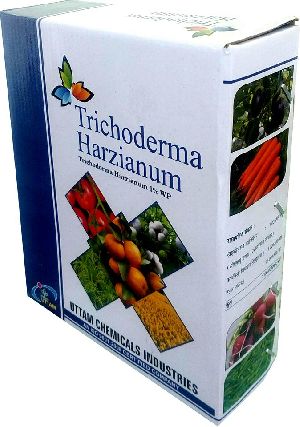
Tricoderma harzainum bio fungicides
210 Per Kilogram
10 Kilogram (MOQ)
tricoderma harzainum is a bio fungicides. It help yo control soil born fungal disesase in various crops
...more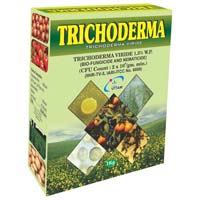
Trichoderma Viride 1.5%WP
210 Per Kilogram
10 Kilogram (MOQ)
We offer trichoderma viride . Trichoderma viride is control soil born fungal disesase and nemetodes in all type of crops Trichoderma viride is a biopesticides under insecticides act
Type : Bio Pesticides
Brand Name : Uttam
Shelf Life : One Year
Application : Anti Fungal And Nemetodes In Plat Roots
Country of Origin : IIHR Banglore
...more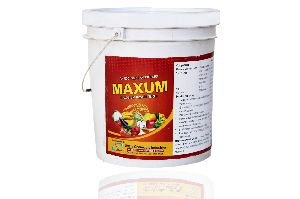
Rhizobium Biofertilizer
70 Per Kilogram
100Kg Kilogram (MOQ)
Maxum is an obligatory aerobic nitrogen fixing bacteria which is capable for nitrogen fixing in roots, in plants. It produces growth promoting substances as IAA (Indole Acetic Acid) and GA (Gibberllic acid) that promote root proliferation and increase the number of rootlets, resulting in uptake of mineral, phosphate solubilisation and water which promote cane growth and sugar recovery in the cane. While all nitrogen bacteria contain nitrogenous in order to utilize atmospheric nitrogen gas as a source of metabolic bio-synthesis, different nitrogen fixing microorganism and protect the oxygen – sensitive microorganism oxygen in different ways. Maxum has symbiotic relationship with many different plants like leguminus plants by colonizing their internal tissues to promote the plant growth. Maxum apparently responsible for this Nitrogen fixation associated with the plants, has unique physiological properties for a diazotroph, such as tolerance to low pH, and high sugar and salt concentrations, lack of nitrate reduce, and nitrogenase activity which tolerates short term exposure to ammonia.
...more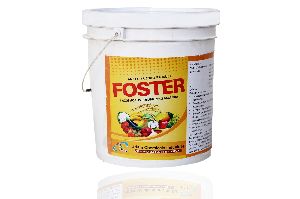
PSB
70 Per Kilogram
100Kg Kilogram (MOQ)
Due to immobilization of phosphate by mineral ions such as Fe, Al and Ca and organic acids, the rate of available phosphate in soil is well below plant needs. Chemical fertilizers are also immobilized in the soil, immediately so that only 20% of added fertilizer is absorbed by plants. PSB converting insoluble phosphatic compounds such as rock phosphate, bone meal and basic slag particularly the chemically fixed soil phosphorus into available form. Such organism not only assimilates phosphorus but also cause a large amount of soluble phosphate to be released in excess of their own requirements and saves P2O5 up to 30 – 50 Kg/ ha. Phosphorus solubilizing activity is determined by the ability of microbes to release metabolites such as organic acid (lactic acid, malic acid, gluconic acid, fumaric acid, succinic and acetic acid). Inorganic phosphorus is solublizedby action of organic (gluconic, ketogluconic) and inorganic acids (Hcl) secreted by PSB and maintain the soil pH. The pH of rhizospheree is lowered the bio-carbonates release (anions/cation balance) and oxygen/carbon oxide gaseous exchange. Phosphorus solubilizing ability of PSB has direct correlation with pH of the medium.
...more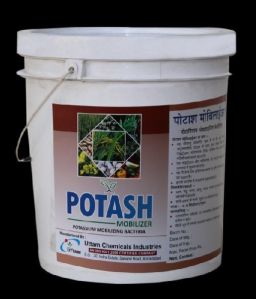
Potash Mobilizing Bacteria
70 Per Kilogram
100Kg Kilogram (MOQ)
The microbial population (PSB and others) and its activity i.e. organic acid secretion contribute the changes of potassium mobility from the soil towards plant roots. Rate of non-exchangeable K release and its mechanism are controlled by nature and amount of clay minerals, besides this exploring the role of microbes present in the soil. KMB could be applied individually however it is recommended along with nitrogen fixing bacteria like Rhizobium spp., Azosprillum and with P-solubilizers respond more with co inoculants and soil application. Target Crops : Cereals like Paddy, Wheat, Millet, Vegetables namely Cabbage, Cauliflower, Pea, Bean, Brinjal, Chilly, Onion, Potato, Leafy vegetables, Tomato, Flowering plants and Fruit crops; Grapes, Citrus, Apple plants. Benefits to the crop and soil Improve resistance of crop plants against disease and stress condition Improve crop growth and yield by 20 – 30 % Secretion of growth hormones to increase crop productivity Suitable to apply to all crop Enhance soil health and soil fertility Reduce cost of potash application by 50 – 60% Improve sucrose content in crop and appearance Improve coloration and shelf life of crop
...more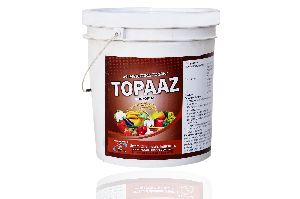
Npk Bio Fertilizers
70 Per Kilogram
100Kg Kilogram (MOQ)
This product is a consortia of various bio fertilizers that provides nitrozen, phosphorous ana potash to plants . specification of this product is under fertilizer control order 1985
...more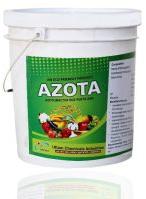
Azotobacter Biofertilizer
70 Per Kilogram
100Kg Kilogram (MOQ)
Azotobacter spp. is the free living nitrogen fixing aerobic bacterium. Azotobacter spp. released ammonia into the soil and improve soil fertility, Production of phyto hormones like IAA, Gibberillins and Cytokinins. Production of some antifungal substances which inhibits the growth of soil harmful fungi like Alternaria, Fusarium, Rhizoctonia, Selerotia curvularia and Helminthosporium and resulted in lowering the disease incidence. Antagonism against phytopathogens by production of siderophore, antifungal compounds and induction of different enzymes. Target crops: Wheat, Paddy, Maize, Cotton, Potato, Millets, Vegetables, Grapes, Banana, Pomegranate, Oranges, Plantation crops, Fiber and Oil producing crops.
...more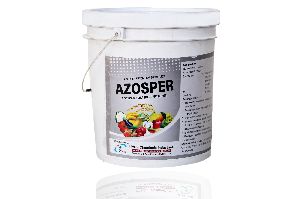
Azospirillum Biofertilizer
70 Per Kilogram
100Kg Kilogram (MOQ)
Azosprillium is an associated aerophilic micro-organism which fixes the atmospheric nitrogen and makes it available to the plants. Azosper culture also synthesize some amount of active substances like vitamins, IAA, Gibberellins and Nicotinic acid which helps in seed germination, early emergence and better root growth and development. Azosprillium colonization is mainly on the root surface, enhance mineral and water uptake. They also conserve water in field. Target crops: Cereals (Wheat, Paddy, Maize, and Barley etc.), Millets (Jowar, Bajra, etc.), Monocot vegetables (Onion, Garlic), and Fruit plants (Pineapple)
...more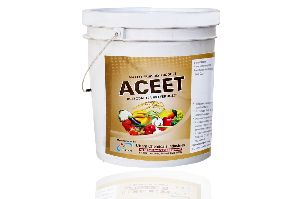
Acetobacter bio fertlizer
70 Per Kilogram
100Kg Kilogram (MOQ)
Acetobacter is an obligatory aerobic nitrogen fixing bacteria which is capable for nitrogen fixing in roots, stems and leaves of sugarcane plants. It produces growth promoting substances as IAA (Indole Acetic Acid) and GA (Gibberllic acid) that promote root proliferation and increase the number of rootlets, resulting in uptake of mineral, phosphate solubilisation and water which promote cane growth and sugar recovery in the cane. While all nitrogen bacteria contain nitrogenous in order to utilize atmospheric nitrogen gas as a source of metabolic bio-synthesis, different nitrogen fixing microorganism and protect the oxygen – sensitive microorganism oxygen in different ways. Acetobacter has symbiotic relationship with many different plants like sugarcane and coffee by colonizing their internal tissues to promote the plant growth. Acetobacter, apparently responsible for this Nitrogen fixation associated with the plants, has unique physiological properties for a diazotroph, such as tolerance to low pH, and high sugar and salt concentrations, lack of nitrate reduce, and nitrogenase activity which tolerates short term exposure to ammonia.
...moreBe first to Rate
Rate ThisOpening Hours